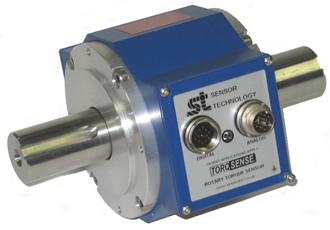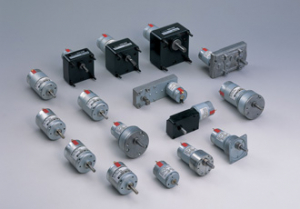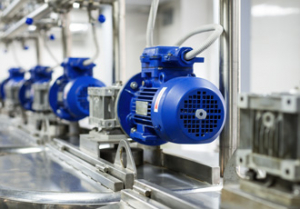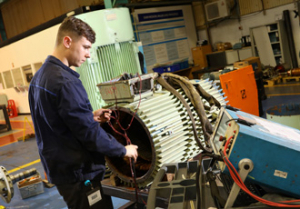Testing the new generation of integrated drives

The recent rise of interest in integrated motor/inverters units has led to the need for testing and mapping of their performance over a range of operating conditions. A wireless torque sense has been used as the heart of a dynamometer built for just this task.
Electric motors are fundamentally fixed speed devices, but can be given variable speed capabilities when they are used with an inverter or variable-speed drive. Usually, the inverter is housed in a control cabinet some distance from the motor. But manufacturers are increasingly mounting the inverters onto the body of the motor in place of the conventional terminal box.
Variable-speed motors are likely to remain niche products, suitable for some applications, but not all. However, they are now more popular than ever and potential installers want to be able to look up the performance characteristics of each make, model and size.
Sensor Technology has been involved in building a dynamometer, based on their TorqSense transducer, designed to map the torque output of integrated motor/inverters.
With many measurements to take for each motor under test, it was considered essential at the design stage that the dynamometer would be easy to use and mount, and dismounting of the test motors could be undertaken quickly and easily.
“Many test and development engineers turn to us when they are building dynamometers and other test rigs,” explains Sensor Technology’s Mark Ingham. “TorqSense uses radio signals rather than hard wiring to feed its reading out to a meter or computer. This means there is no need for wiring, particularly slip rings, which can be very time-consuming to set up between each test piece.”
Another attraction of TorqSense is that it has a plug and play CAN bus interface and many test facilities use this communications protocol as their preferred choice.
“TorqSense is in fact very easy to use,” says Mark. “Basically, you mount it near the rotating shaft of the motor under test and read off the torque value. The interface allows you to capture real time readings to a computer for later analysis and we provide a full range of easy to use supporting software for this.”
It has always been difficult to directly measure shaft torque, due to the difficulties in obtaining sufficiently reliable and accurate signals with currently available transducer technologies. In fact, most torque transducers are too mechanically compliant to provide an accurate dynamic measurement of torsional excitation during speed or load changes. An alternative approach could be to derive the torque from the electromagnetic characteristics of the driven machine, but this does not account for the various inertias of the rotating loads in the drive train, or torque perturbations.
By using an embedded surface acoustic wave (SAW)-based TorqSense transducer, it is possible to accurately measure and hence provide improved control of the instantaneous shaft torque from all possible sources. This includes machine-generated torque ripple, high-speed control loops and load/torque disturbances, at different points in the drive train.
The TorqSense torque measurement system is relatively small, self-contained, non-contact and is unaffected by magnetic fields. Consequently, it can be mounted either inside a machine or as a discrete add-on measurement device. With this additional control data, control algorithms for the servo controller can be improved.
The principle behind SAW devices used in TorqSense transducers is that they are essentially 'frequency dependent' strain gauges, which measure a change in SAW resonant frequency caused by an applied shaft strain.
The TorqSense is mounted on the dynamometer close to the test motor and transmits a radio frequency signal to the rotating shaft. Two piezoelectric combs are glued onto the shaft at right angles to one another so that one compresses under torque and the other expands. The combs reflect the signal back to the TorqSense, having changed its frequency in proportion to their distortion.
By using a frequency-based concept, the signal bandwidth is increased, and electronic interference common with other analogue-based technologies, for example strain gauge and inductive devices, is eliminated. The returned signal is fed into a PC for analysis.
TorqSense can be used with a dedicated software programme, TorqView2, which generates a real-time visual instrumentation display as well as logging the data for later analysis. It provides fully configurable and scalable graphics modules, so that the information can be presented in a number of different formats including as discrete digital readouts, as analogue dials, as bar graphs, etc. User configurable inputs, such as 4-20mA signals from accelerometers, allow complete customisation of TorqView2 for every application.
Data such as peak values, time-sequenced and time-stamped values, etc., can also be collected and stored in text files or spreadsheets and exported to other programmes for subsequent analysis. Text comments can be incorporated into the data, either using an auto-trigger function, or discretely as the user requires.
Integrated drives have been available for some time, but to date the electronics have suffered under the heat and vibration of the motor. But now, new generations of electronic and power electronic components are overcoming these issues, leading to the prospect of a significant increase in the take-up of integrated drives.
Mark again: “The technical team behind this dynamometer has considerable expertise in power electronics and is thus helping the global push to develop hybrid and fully electric cars, powered prosthetics, high efficiency lighting and various eco-power generating technologies. Perhaps variable speed motors are not quite so ‘blue sky’ – but they are very practical and could make a considerable contribution to technological advancement in a relatively short time.”
Similar articles
More from Sensor Technology Ltd
- Hydrogen fuelled car drives for efficiency world record 29th July 2020
- Wine growers gain vintage success with help of engineers 15th January 2019
- Wireless torque measurement at the heart of distribution network 12th December 2018
- Measuring torque without slip rings 19th November 2018












Write a comment
No comments